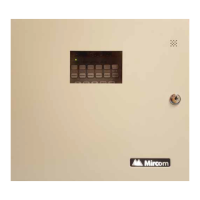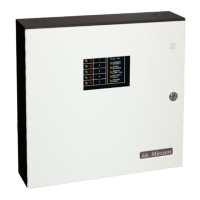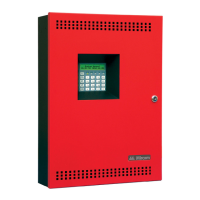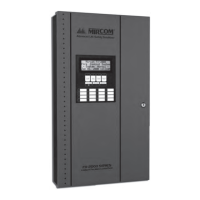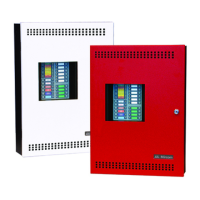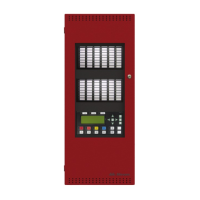58
Indicators, Controls, and Operation
8.7.2 Indicating (Signal) Circuit Types
8.7.3 Evacuation Codes
Single stage codes
Two-stage codes
Property and
Building Safety
This is a supervised general purpose non-latching input used mainly for correlating to
a relay circuit. No other system condition occurs as a result of its activation (short-
circuit), although it is supervised for trouble (open-circuit).
Trouble-Only This circuit is used for monitoring a trouble condition from an external device such as a
Mircom Series 500 Audio System. Both open and short circuits generate a non-
latching trouble condition.
Table 9 Indicating (Signal) Circuit Types
Circuit Type Description
Silenceable Signal For audible devices such as bells and piezo mini-horns that may be silenced
either manually or automatically. While sounding, these follow the pattern
appropriate for the condition: the configured evacuation code (default is temporal
code) during single-stage alarm, or two stage general alarm, or the alert code
during a two stage system's alert (first) stage.
Non-Silenceable
Signal
For audible devices such as bells and piezo mini-horns that may not be silenced
either manually or automatically. While sounding, these follow the pattern
appropriate for the condition: the configured evacuation code (default is temporal
code) during single-stage alarm, or two-stage general alarm, or the alert code
during a two stage system's alert (first) stage.
Strobe For visual devices such as strobes that use no code patterns (they are
continuous).
Continuous On 100% of the time
Temporal Code 3 of 0.5 second on, 0.5 second off then, 1.5 second pause
March Code 0.5 second on, 0.5 second off
California Code 5 seconds on, 10 seconds off
Alert Code 0.5 second on, 2.75 seconds off
General Alarm Evacuation code as selected from above.
Table 8 Initiating (Detection) Circuit Types (Continued)
Circuit Type Description
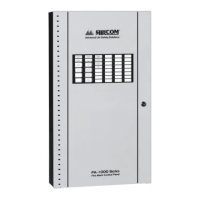
